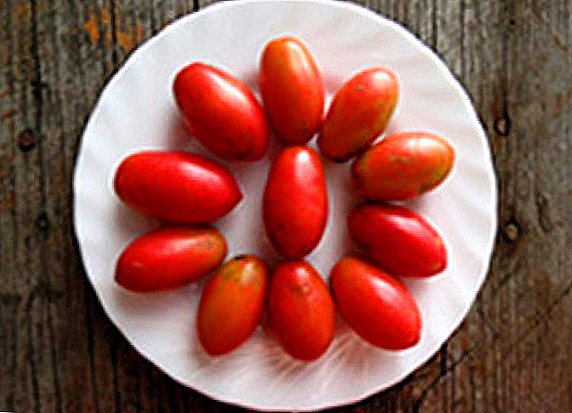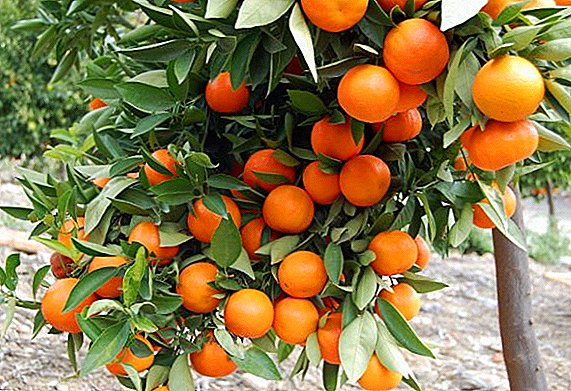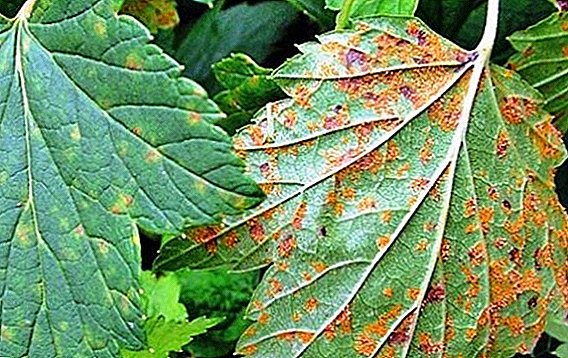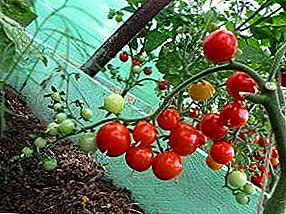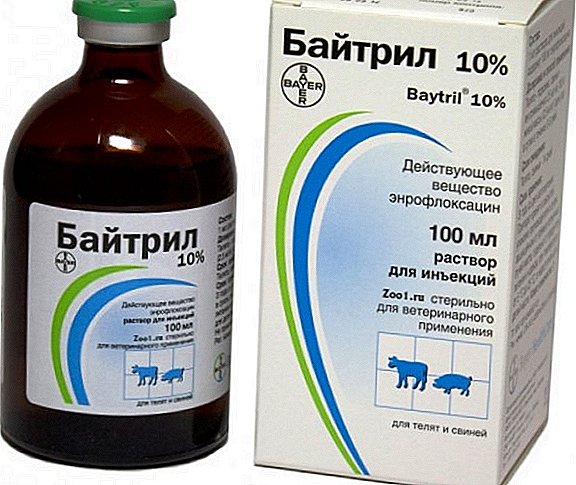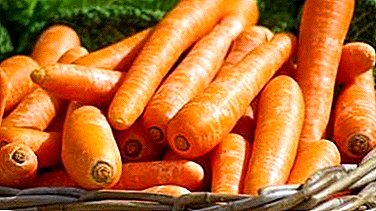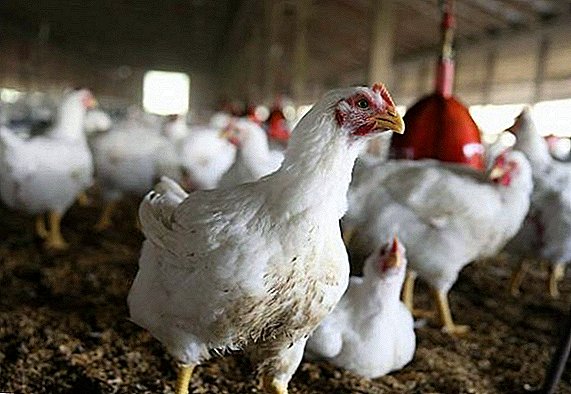 The question of the life expectancy of poultry will be of interest both to farmers who keep chickens on a large scale, and to private farms with more modest livestock.
The question of the life expectancy of poultry will be of interest both to farmers who keep chickens on a large scale, and to private farms with more modest livestock.
Each species and breed has its own life expectancy, but the number of years is directly affected by the conditions of detention and food.
How many years has the chicken lived
From a biological point of view, a hen lives on average 4-5 years. However, deviations are possible both upwards - such birds are called record holders-long-livers, and downwards, if chickens are raised for meat. Below we consider the life of birds in the conditions of industrial and domestic content:
- On an industrial scale. On large farms and poultry farms grow meat and egg breeds of chickens. In the first case, the bird contains from a couple of honeydews to one-year-olds, since the older the birds become, the worse the meat quality will be: it loses its dietary properties, becomes rigid. Laying hens live on farms for a maximum of 3 years. In egg breeds, the peak of productivity is 1-2 years of life, starting from the third year the amount of production is rapidly declining.
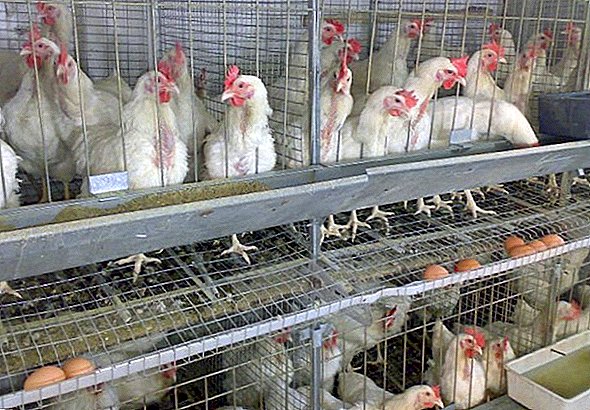 Therefore, it does not make sense to keep egg chickens longer than 3 years. Poultry farms often have unsatisfactory housing conditions in order to reduce production costs and the final cost of production. Therefore, birds can be kept cramped, without the ability to move, their appearance and health, especially the reproductive system, deteriorate. Such birds go to slaughter very early.
Therefore, it does not make sense to keep egg chickens longer than 3 years. Poultry farms often have unsatisfactory housing conditions in order to reduce production costs and the final cost of production. Therefore, birds can be kept cramped, without the ability to move, their appearance and health, especially the reproductive system, deteriorate. Such birds go to slaughter very early. - Home In a small private farm, the life span of a bird will depend on the conditions created for it and the will of the owner himself. Most often, after several years of life, when the peak of the egg production passes, the chicken is allowed for meat. Adverse external conditions (weather or the attack of predatory animals) can shorten the life span of a domestic chicken.
Important! Statistics show that the percentage of chickens of different ages in poultry farms is as follows: 60% are young, 30% are two-year-old chickens and only 10% are three-year-old chickens.
What affects the lifespan
The balance of the diet, the right conditions and the physiological characteristics of the breed also determine how many years the birds live.
Proper nutrition
 In case of violation of the rules of fodder content, the health of birds can be shaken already in the initial period of life, while chickens barely live to the age of one year. If you follow all the principles of a balanced diet, chickens live to 5-6 years. The diet of domestic chickens should be 60% leguminous - this is the basis of nutrition, this includes wheat, oats, peas, corn. Be sure that the birds should receive greens, vegetables, dairy products.
In case of violation of the rules of fodder content, the health of birds can be shaken already in the initial period of life, while chickens barely live to the age of one year. If you follow all the principles of a balanced diet, chickens live to 5-6 years. The diet of domestic chickens should be 60% leguminous - this is the basis of nutrition, this includes wheat, oats, peas, corn. Be sure that the birds should receive greens, vegetables, dairy products.
Learn how to make a diet for chickens, and how to prepare feed for poultry with your own hands.
For full development and good health it is necessary to include mineral supplements. In industrial conditions it is recommended to use ready-made feed.
Deficiency of micro-macroelements, in particular, calcium, at first negatively affects the productivity of chickens, and then on their health and longevity. Irregular feeding, overfeeding, abrupt feed changes also reduce the life of chickens.
Did you know? A short fast may have a strong therapeutic effect on chickens. For example, in Japan, an experiment was conducted, during which old, not long-running chickens, were deprived of food for 7 days, and then resumed feeding. As a result of such stress, feathers and crests were completely renewed in birds, activity and mobility typical for young animals were resumed. But, most importantly, these individuals again began to lay eggs!

Conditions of detention
The level of comfort of birds depends on the following aspects in the content:
- there is enough space in the hen house;
- maintaining a comfortable temperature, especially in winter;
- availability of backlight if necessary;
- regular cleaning, ventilation and disinfection of the chicken coop;
- the presence of a spacious yard for walking, which is especially important for mobile breeds of chickens.
Important! It is necessary to strictly adhere to the proportion of males and females in the household. One rooster has an average of 10 chickens, while the worse the conditions and food, the less chickens should fertilize a rooster.
Breed
The average life expectancy of different breeds is a fairly conventional concept, since even the longest-lived breed can be destroyed by improper maintenance or feeding. Conversely, chickens that have a short life span from a biological point of view can exist for a very long time under favorable conditions.
General trends for different breeds are as follows:
- egg breeds (leggorn, brekel, broken brown, russian white and crested, minor, etc.) can live to 8 years, but most often they are kept up to 2-4 years;
- meat breeds (broiler chickens, orpington, brahma, etc.) usually go for slaughter at the age of 8 weeks, they have a short life span, because the muscle mass exerts a strong load on the legs, which can cause the chickens to die and die their own death;
- egg and meat breeds (Amrox, Australorp, Wyandot, Hercules, Delirium, and others) - universal, hardy and unpretentious in keeping birds, their natural lifespan is the same as that of egg breeds, after a drop in egg production they go to slaughter for valuable and nutritious meat.



It will be helpful for the poultry farmers to know when the young pullets begin to rush and what to do if the chickens are ill.
How many years can keep chickens at home
You can keep egg, meat and hybrid chickens in your home yard. Separate attention is also worthy of male birds and ornamental species.
- Layers. Reducing chicken egg production occurs after 1.5-2 years of life. If in the first year of life 100% return could be obtained from the birds, then with each subsequent year productivity will fall by 10-15%. On average, laying hens at home hold up to 3, maximum up to 4 years.
- Broiler Chickens In the industrial cultivation of broilers practically do not contain after reaching the maximum weight, which usually occurs in about 2 months. In domestic conditions, the age of chickens can reach from several months to 1 year.
- Meat-egg breeds. Today, this group of birds is gaining increasing popularity. Together with high productivity, they have a well-developed muscular system. Such individuals usually contain up to 1.5-2 years of life.
- Roosters The main purpose of the rooster is to maintain the productivity of chickens and get young. As soon as the period of active fertilization of females ends, the rooster starts up for slaughter. The average lifespan is 4 years.
- Decorative species. They can live up to several decades, since they do not consume the resources of the body as rapidly as the egg species.



Did you know? Contrary to the fact that chickens are considered to be flightless species of birds, in some circumstances, they still use their wings to move. Thus, the longest flight of a chicken was recorded, which lasted as long as 13 seconds.
Record holder long-lived
The oldest chicken on the planet is recognized as an individual who has lived to 14 years. This record is listed in the Guinness Book. There is also a lot of information about other avian long-livers, but these facts are not documented. So, there are allegations about the death of birds at the age of 18, 20 and more years. However, there is no scientific explanation and evidence for such cases.
How much chicken lives without a head
Most likely, the reason for this unusual question is a case from the past, when a decapitated rooster from a small American town lived for a year and a half, while becoming a star in the whole country and decently enriching its owners. It all happened in 1945. After the research, it became clear that the life of the rooster was saved by a blood clot, which blocked the jugular vein and prevented fatal bleeding.
In order to maintain life, the farmer was forced to feed and water the bird, delivering food directly into the esophagus, as well as pumping out the mucus with a syringe so that the birds do not suffocate. All vital functions continued to control the spinal cord. However, after 18 months, the cock still suffocated and died.
We recommend that you familiarize yourself with the symptoms and effects of diseases of adult chickens and chickens, as well as methods of their treatment.
 In general, the owners at private farmsteads can observe the situation when, after decapitation, the bird continues to run for a while, flapping its wings, making chaotic movements. On average, this lasts up to 15–20 seconds and only happens if the spinal cord is not injured while cutting off the head. For a short time, he is able to control the body if no signals are coming from the brain. The life time of a headless chicken depends on the place of the blow with an ax, the speed and amount of blood loss, and the anatomical features of the feathered one.
In general, the owners at private farmsteads can observe the situation when, after decapitation, the bird continues to run for a while, flapping its wings, making chaotic movements. On average, this lasts up to 15–20 seconds and only happens if the spinal cord is not injured while cutting off the head. For a short time, he is able to control the body if no signals are coming from the brain. The life time of a headless chicken depends on the place of the blow with an ax, the speed and amount of blood loss, and the anatomical features of the feathered one.
The physiological life expectancy of chickens and their actual life in households and on poultry farms differ significantly. Usually chickens are kept up to the maximum possible weight gain (meat breeds) or to the peak of egg productivity, after which they are sent for slaughter. The lifetime of the birds largely depends on the conditions provided by the person.
How long do chickens live: reviews




 Therefore, it does not make sense to keep egg chickens longer than 3 years. Poultry farms often have unsatisfactory housing conditions in order to reduce production costs and the final cost of production. Therefore, birds can be kept cramped, without the ability to move, their appearance and health, especially the reproductive system, deteriorate. Such birds go to slaughter very early.
Therefore, it does not make sense to keep egg chickens longer than 3 years. Poultry farms often have unsatisfactory housing conditions in order to reduce production costs and the final cost of production. Therefore, birds can be kept cramped, without the ability to move, their appearance and health, especially the reproductive system, deteriorate. Such birds go to slaughter very early.

